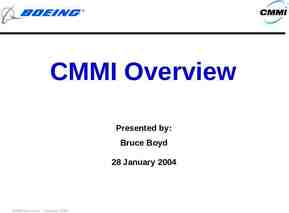TRENCH RESCUE AWARENESS Drill of the Month
27 Slides856.50 KB
TRENCH RESCUE AWARENESS Drill of the Month
Definition O.S.H.A. defines a trench as any man-made cut, cavity, trench, or depression in the earth’s surface formed by earth removal. A trench is defined as a narrow underground excavation that is deeper than it is wide, and is no wider than 15 feet (4.5 meters). O.S.H.A. only recognizes the need for worker protection in trenches that are in excess of 5 feet The O.S.H.A. standard for trenches is 29CFR 1926 Trenches that exceed 20 feet deep and 15 feet in width require a Registered Professional Engineer (RPE)
Hazards 65% of deaths that occur in trenches are “would be rescuers” Cave-ins or collapses that can trap rescuers. Equipment or excavated soil falling on workers (e.g., equipment operated or soil/debris stored too close to the excavation). Falling into the trench or excavation. Flooding or water accumulation. Poor air quality
O.S.H.A. Worker Protection O.S.H.A. prohibits entry into trenches over 5 feet deep unless one of the following conditions are met: The walls are properly sloped back so they cannot fall in The worker is properly protected by a properly designed and positioned trench shield The worker is protected by properly designed and constructed shoring
Rolling the Dice
Atmospheric Monitoring Atmospheric testing is required before workers enter an excavation greater than 4 feet (1.22 meters) in depth where an oxygen deficiency or a hazardous atmosphere is present or could reasonably be expected, such as in excavations in landfill areas or excavations in areas where hazardous substances are stored nearby
Types of Collapses 4 Types Slough-in or slide-in: below grade section collapses Side wall-in: entire side collapses Shear-in: top portion collapses Spoil-in: excavated soil collapses
Soil A shear wall collapse speed can be 45 mph. A single cubic foot of soil weighs approximately 100 lbs. A cubic yard weighs approximately 3000 Lbs.
Rescue Operations Usually Long Term Operations – General rule of thumb is removing soil at the rate of 1 foot an hour. You must uncover victims entirely before attempting to remove them from the trench. Never use backhoes or excavators to remove victims.
Soil Classifications Class A Soil Most stable Soil has clumps and clumps are difficult to break apart Thumb test can only dent the clump Class B Soil Soil has clumps Clumps break apart with minimal effort Thumb can penetrate or mold soil Class C Soil Soil is granular Trench is wet
Classifying Soil Thumb penetration method Simplest and easiest Soil that is removed from the spoil pile, is granular or wet Class C Soil Soil that is removed from the spoil pile is, difficult to break apart or only dents Class A Anything in between Class B
Adjustment Considerations Layered Soils Fissured Soils Previously Disturbed Soil Vibration Wet soils or standing water in the trench Any wet soil is automatically considered Class C Soil
O.S.H.A. Adjustment Classifications Wet Soil Class C Adjust Soil Class DOWN one level for the following: Trench involves SLOPED-LAYERED SOIL Trench involves FISSURED (Cracked) SOIL Trench involves PREVIOUSLY DISTRUBED SOIL Trench is subject to VIBRATION
Other Factors Water Removal Underground Utilities O.S.H.A. requires that all utilities or other structures exposed in trenches be properly supported Surface Encumbrances Items that cannot be moved and have to be supported Superimposed Loads O.S.H.A. requires that all superimposed loads, including the spoil pile, be placed more than two feet from the edge of the trench Exposure to the elements O.S.H.A. requires that trenches be analyzed for safety and stability at least daily, and after any event which may have effected the stability of the trench or of the protection system
Protective systems O.S.H.A. provide three methods for protecting workers in trenches Sloping Shielding Shoring No worker is to enter a trench greater than 5 feet deep unless one of these protections is in place
Types of Protection
Additonal Regulations for Safety Escape Routes No more than 25 Feet travel distances Ladders are usually used Ladders must extend a “few feet” above the lip of the trench and MUST be secured Air Quality Monitoring Care should be taken with the sick or unconscious patient Ventilation may be required Oxygen deficient Carbon Monoxide Hydrogen Sulfide
Sloping Involves the cutting back of the side of the trench to an angle at which the earth will no longer slide. ANGLE OF REPOSE – is defined as the angle at which soil will no longer slide Class A 1 ft. down ½ ft. back Class B 1 ft. down 1ft. back Class C 1 ft. down 1 ½ ft. back Safest form of protection, however is time consuming and takes a significant amount of space
Shielding and Trench Boxes Extremely strong steel boxes Assembled on site and moved into place Trench boxes should be placed so to extend above the lip of the trench and not more than 2 feet off the bottom of the trench
Shoring Shoring is designed to be strong enough to stop the walls from starting to move, but is not designed to be strong enough to stop moving dirt. Several types of shoring Pneumatic shores Hydraulic Shores Dimensional Lumber Shoring
Shoring Installation Shoring systems must be installed from the top of the trench down, and removed in the reverse order.
Incident Operations Request a Technical Rescue Response for a trench rescue assignment Approach the site from the ends of the trench only. Establish accountability Place ingress and egress ladder in trench for the victim to self rescue Establish no vibration zone of a minimum of 200 ft. in all directions. This should include the shut down of emergency and civilian vehicles and equipment.
Incident Operations Identify site foreman and any witnesses to the incident. Gather relative information, i.e., type of work, dimensions of trench, number of victims, plot plans, weather report and equipment logistics. Establish three control zones (Hot, Warm, and Cold).
Incident Operations Observe the overall site for obvious hazards, i.e., surface cracks, spoil pile, utilities, and heavy loads near the open trench and fire hazards. Relay critical information to the officer in charge of first arriving Special Operations Command Unit. Secure utilities if appropriate. Monitor atmosphere. Assure that all personnel are wearing the proper PPE. Minimum of a Helmet, Eye Protection, Gloves, Foot Protection
Inicdent Operations Any trench deeper that fifteen (15) feet will require a structural engineer to be on site to develop that shoring plan. These incidents are considered as a potential crime scene and most will be investigated by MOSH Consider the notifications of another technical rescue team(s) as Rapid Intervention Team. Consider the need to request the “Go Team”.
REMEMBER DO NOT allow personnel into an unprotected trench DO NOT allow the use of heavy equipment
SUMMARY Recognize the need for trench rescue Initiate emergency response Establish control zones Recognize hazards Recognize collapse patterns Initiate IAP Initiate rapid non-entry rescue(Ladder)
































